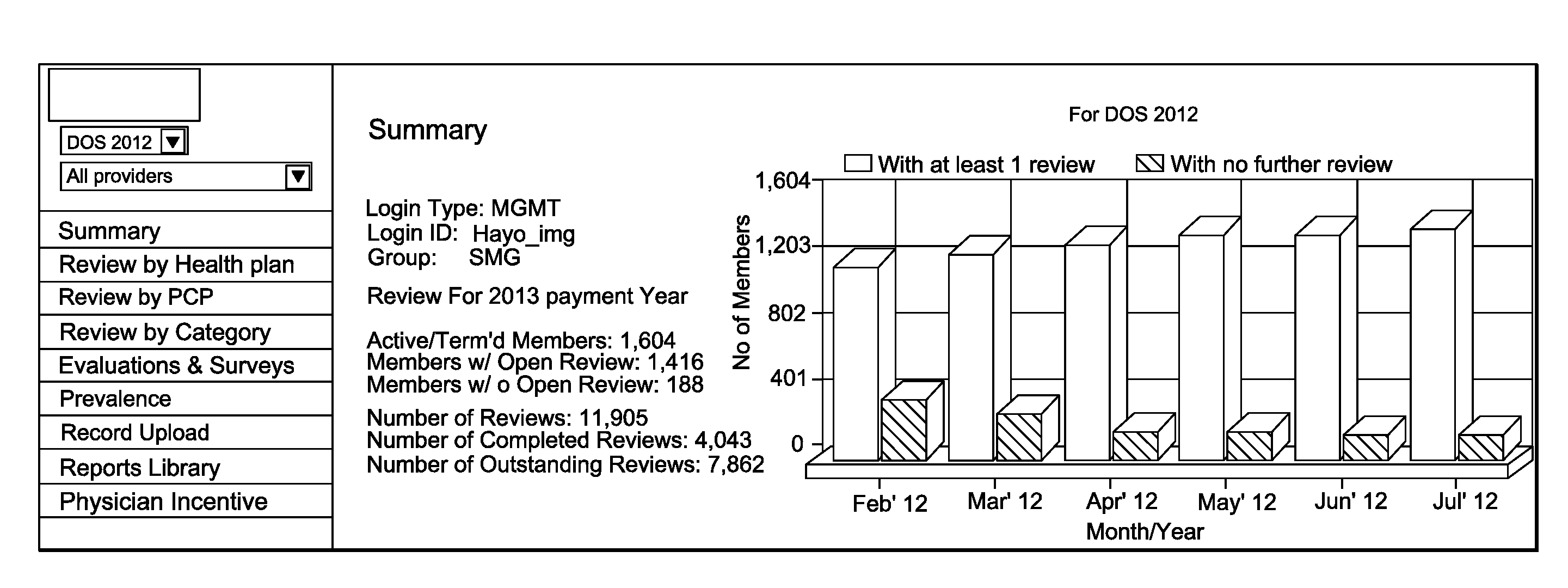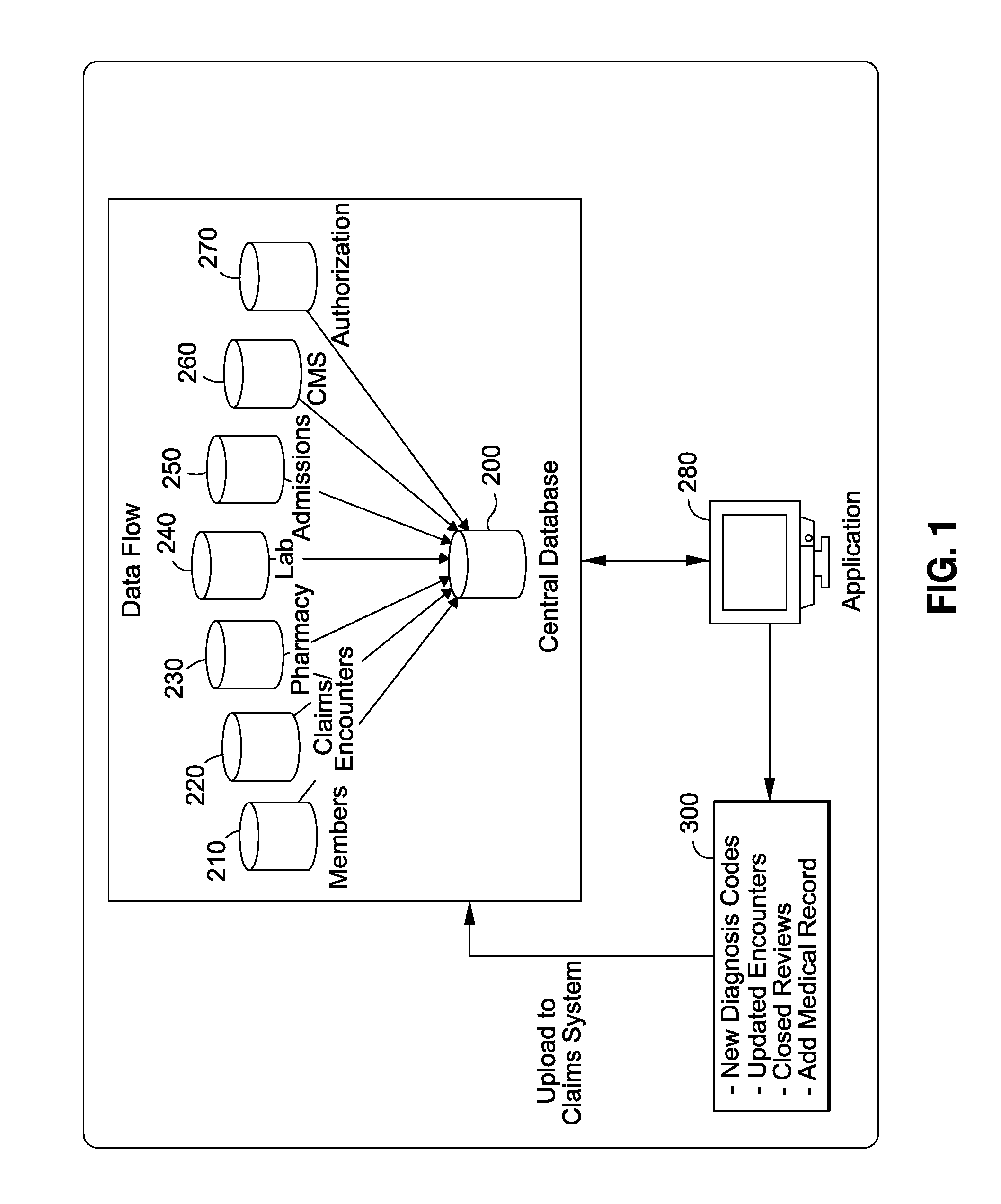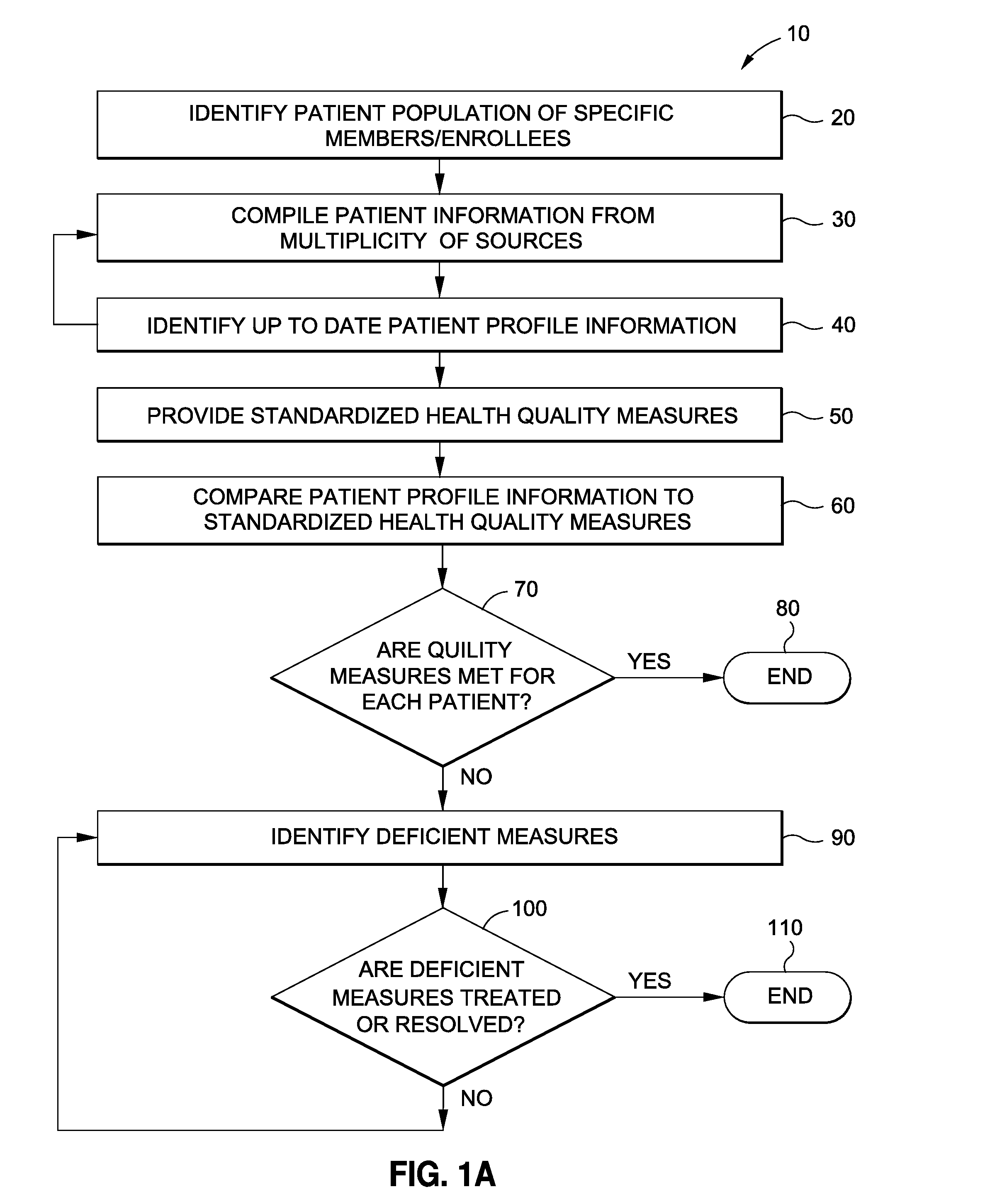Multicomputer data processing system
a data processing system and multi-computer technology, applied in data processing applications, instruments, healthcare resources and facilities, etc., can solve the problems of insufficient incentives (funding), limited number of quality outcomes measured, and disjointed and incomplete health information and assessment of care quality
- Summary
- Abstract
- Description
- Claims
- Application Information
AI Technical Summary
Benefits of technology
Problems solved by technology
Method used
Image
Examples
Embodiment Construction
[0026]The detailed description set forth below is intended as a description of the presently preferred embodiment of the invention, and is not intended to represent the only form in which the present invention may be implemented or performed. The description sets forth the functions and sequences of steps for practicing the invention. It is to be understood, however, that the same or equivalent functions and sequences may be accomplished by different embodiments and that they are also intended to be encompassed within the scope of the invention.
[0027]Referring now to the drawings, and initially to FIG. 1A, there is shown, generally, a method 10 depicting the steps necessary to: 1) identify a specific patient population of members / enrollees that are eligible to receive healthcare and compiling and tracking all related healthcare information with each respective patient within such population; and 2) administer healthcare to each specific individual member / enrollee within the patient ...
PUM
 Login to View More
Login to View More Abstract
Description
Claims
Application Information
 Login to View More
Login to View More - R&D
- Intellectual Property
- Life Sciences
- Materials
- Tech Scout
- Unparalleled Data Quality
- Higher Quality Content
- 60% Fewer Hallucinations
Browse by: Latest US Patents, China's latest patents, Technical Efficacy Thesaurus, Application Domain, Technology Topic, Popular Technical Reports.
© 2025 PatSnap. All rights reserved.Legal|Privacy policy|Modern Slavery Act Transparency Statement|Sitemap|About US| Contact US: help@patsnap.com



